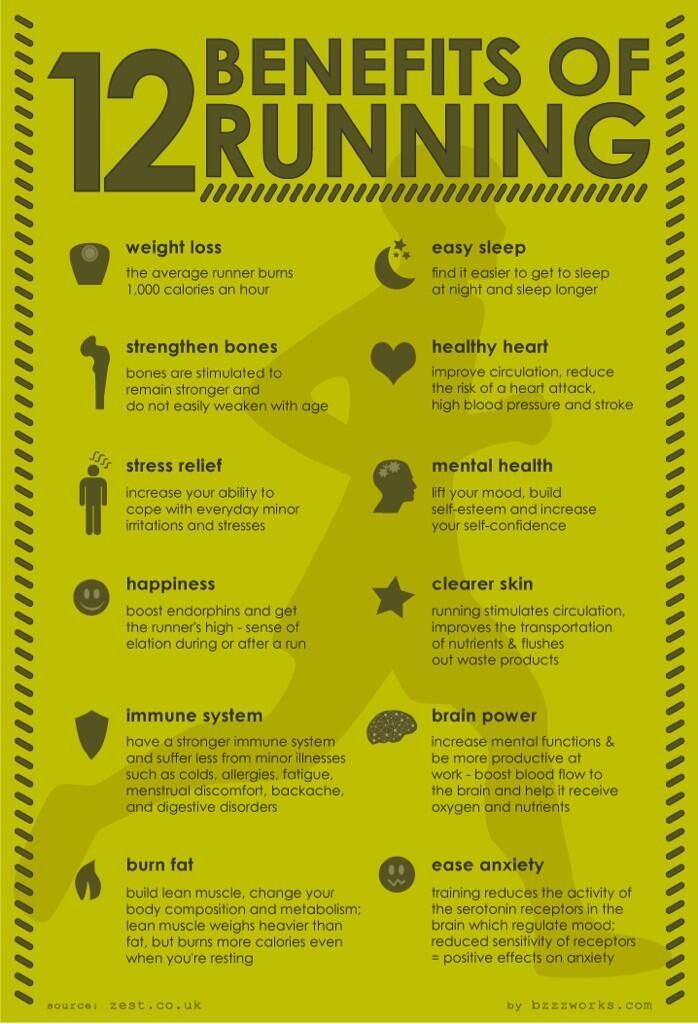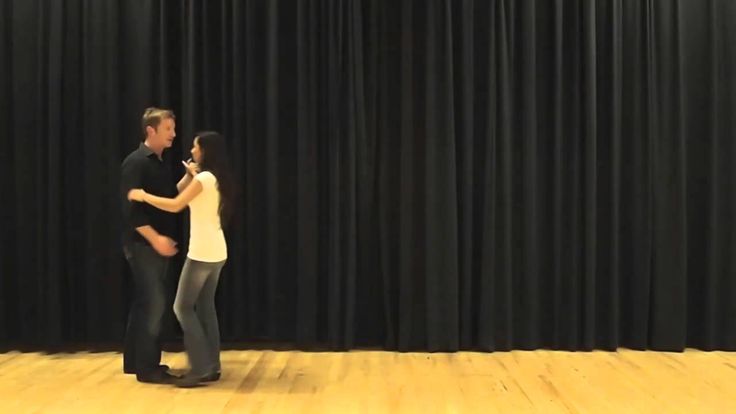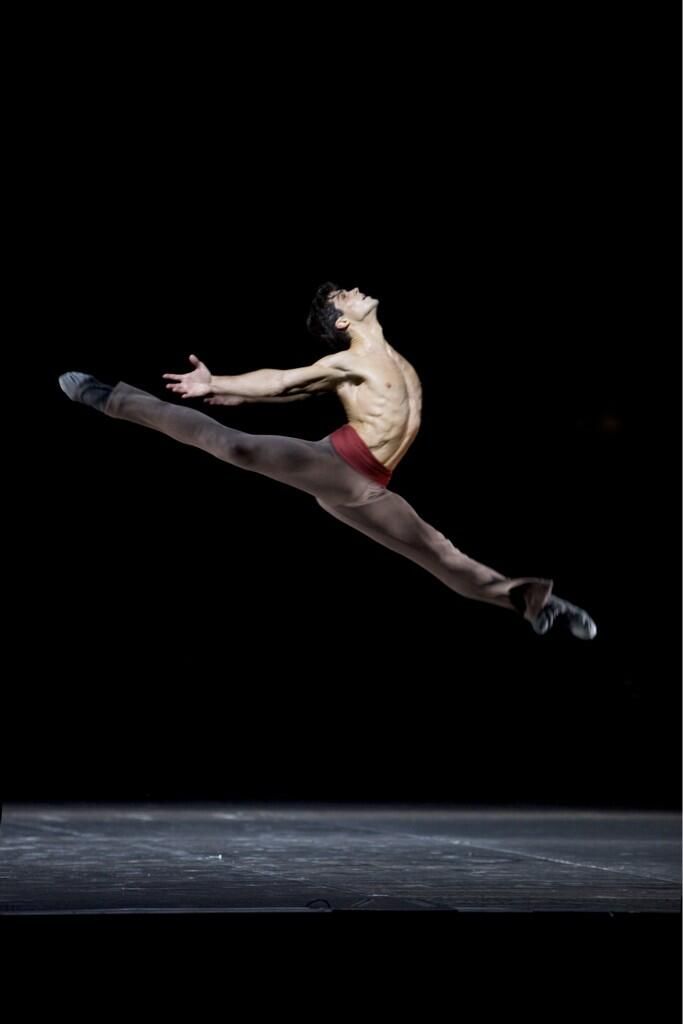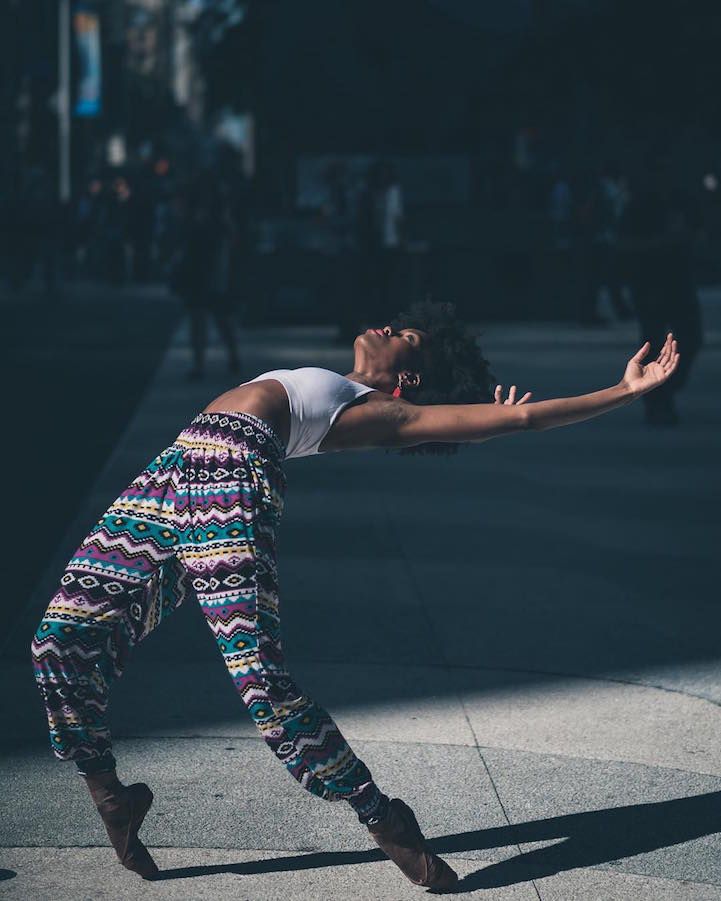How to become a pro hip hop dancer
Hip Hop Dancer - Salary, How to Become, Job Description & Best Schools
How to Become a
The complete career guide to be a Hip Hop Dancer: salary, job growth, employers, best schools, and education you may need to get started.
Why We Love It
-
4.6%
Job Growth Rate
-
Growing Demand
Job Outlook
-
Creativity Focused
Career Attribute
-
Flexible Hours
Career Attribute
Hip hop dancers perform in competitions, concerts, music videos, shows, and movies. They execute one or more styles that are signature to hip hop dancing—including street styles like breaking, locking, popping, and krumping—or commercial styles that prefer choreography over freestyle dancing.
Recommended Schools
What is a Hip Hop Dancer?
The following job responsibilities are common for individuals in hip hop dancer roles:
- Execute popular hip hop dancing styles like breaking, locking, popping, and krumping
- Compete in dance competitions on both a large and small scale
- Provide entertainment for an audience by dancing as part of concerts, filmed TV or movie performances, music videos, and other performances
- Practice the art of hip hop dancing and learn choreographed dance moves and routines when necessary
A Day in the Life of a Hip Hop Dancer
While many people enjoy hip hop dancing as a hobby, for fun, or to entertain their friends, some people are able to earn a living working as hip hop dancers. These individuals spend most of their time practicing, improving their craft, and learning new choreography for roles. Many hip hop dancers work full-time hours simply practicing their craft in order to execute flawless performances, and to become more competitive when auditioning for new roles.
These individuals spend most of their time practicing, improving their craft, and learning new choreography for roles. Many hip hop dancers work full-time hours simply practicing their craft in order to execute flawless performances, and to become more competitive when auditioning for new roles.
Beyond practicing—either for professional growth or for secured roles—hip hop dancers also spend a lot of time auditioning. When a role opens up for a hip hop dancer to appear as part of a show or concert series, or to appear in a music video, TV show, or movie, professional hip hop dancers must audition for the role in much the same way as an actor auditions. It’s a competitive field that’s full of exceptional dancers, so hip hop dancers practice frequently to be at the top of their game when auditioning.
After securing roles, hip hop dancers spend a significant amount of time preparing for their performances. The work with other dancers, choreographers, musicians, and other members of the production crew to perfect performances before filming or live demonstrations.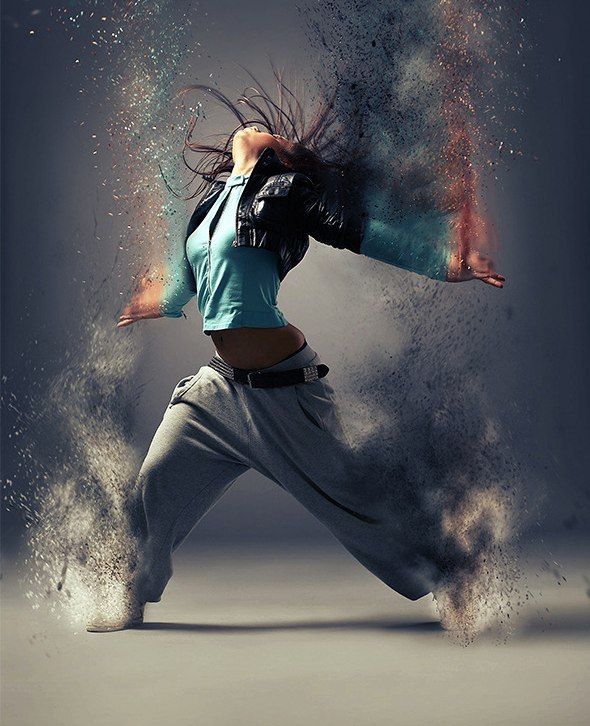 They may also be required to participate in promotional events for the productions they’re dancing in.
They may also be required to participate in promotional events for the productions they’re dancing in.
Typical Work Schedule for Hip Hop Dancers
There really is no typical schedule for hip hop dancers. Since most are independent performers, they can work as much or little as they want. Often, hip hop dancers work long hours in preparation for a big show but take time off between jobs to relax. They may be required to perform in evenings and on weekends as well, especially if they’re performing in hip hop concerts.
Typical Employers
Most hip hop dancers are independent agents that seek contract positions by auditioning for musicians or production companies. Additionally, many hip hop dancers eventually move on to teach hip hop dance classes or manage their own dance studios.
Recommended Schools
How To Become a Hip Hop Dancer
Most hip hop dancers begin training at a very young age—either as part of street dancing with friends and family members or in formal classes at a local dance studio. However, in this field, formal training is often less important than talent, and many successful hip hop dancers—especially street dancers—receive no formal training before landing roles in productions.
However, in this field, formal training is often less important than talent, and many successful hip hop dancers—especially street dancers—receive no formal training before landing roles in productions.
While formal education may not be required, many hip hop dancers find that an education in dance can be beneficial. It provides an education in a variety of dance styles, provides useful information on auditioning for roles and finding talent representatives, and teaches you how to pick up choreography quickly. These can prove to be useful talents for career hip hop dancers, so many pursue fine arts or theatrical bachelor’s and master’s degrees with a focus on hip hop dance.
After a career of dancing, many hip hop dancers go on to become dance teachers. Some may own their own dance studios, some may teach individual classes at studios, and some may teach at the college level. For those that want to teach hip hop dancing at the college level later in their careers, both an undergraduate and graduate degree in a dance-related discipline will likely be required.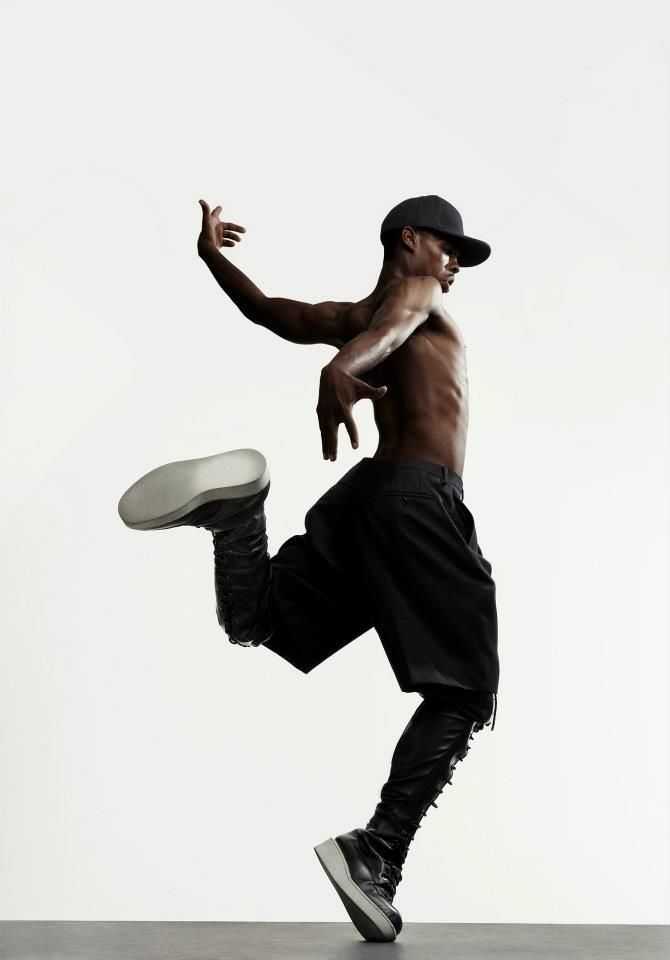
Hip Hop Dancer Salary Data
We’ve provided you the following to learn more about this career. The salary and growth data on this page comes from recently published Bureau of Labor Statistics data while the recommendations and editorial content are based on our research.
National Anual Salary
Low Range
---Average
---High Range
---National Hourly Wage
Low Range
$9/hrAverage
$18/hrHigh Range
$33/hrHow do Hip Hop Dancer salaries stack up to other jobs across the country? Based on the latest jobs data nationwide, Hip Hop Dancer's can make an average annual salary of ---, or $18 per hour.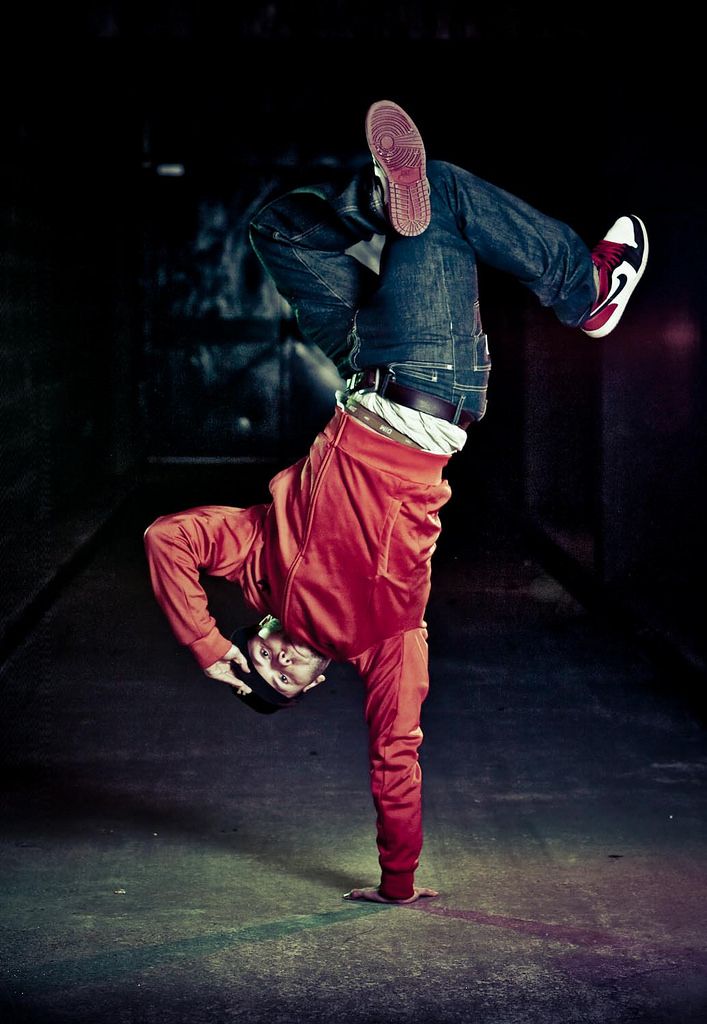 This makes it an Above Average Salary. On the lower end, they can make --- or $9 per hour, perhaps when just starting out or based on the state you live in.
This makes it an Above Average Salary. On the lower end, they can make --- or $9 per hour, perhaps when just starting out or based on the state you live in.
Salary Rankings And Facts
Programs and Degrees
Here are the most common degrees for becoming a Hip Hop Dancer. a is usually recommended and specifically a degree or coursework that prepares you for the particular field, see below.
-
Dance
Highest Education Among Hip Hop Dancers
- 0.5% Doctorate
- 4.3% Masters
- 17% Bachelors
- 10.6% Associates
- 29% College
- 26.7% High School
- 11.
 9% Less than High School
9% Less than High School
Job Growth Projections and Forecast
2014 Total Jobs
13,0002024 Est. Jobs
13,600Job Growth Rate
4.6%Est. New Jobs
600How does Hip Hop Dancer job growth stack up to other jobs across the country? By 2024, there will be a change of 600 jobs for a total of 13,600 people employed in the career nationwide. This is a 4.6% change in growth over the next ten years, giving the career a growth rate nationwide of Below Average.
Growth Rankings And Facts
What Companies Employ The Most Hip Hop Dancers
| Industry | Current Jobs | New Jobs Needed | % Increase |
|---|---|---|---|
| Self-employed workers | 2,000 | 100 | 0% |
| Drinking places (alcoholic beverages) | 1,700 | --- | --- |
| Other schools and instruction; private | 900 | 200 | 0% |
Want To Be a Hip Hop Dancer? Get Started!
Generate your free SmartPlan™ to identify colleges you like, and potential ways to save on a degree or certification program toward your career with courses, offers, and much more!
Enroll Now and Get Started
or Learn More →
How to Dance Professional Hip Hop
Posted By JBS Admin on May 4, 2020 |
Wondering how to dance professional hip hop? You’ve come to the right place.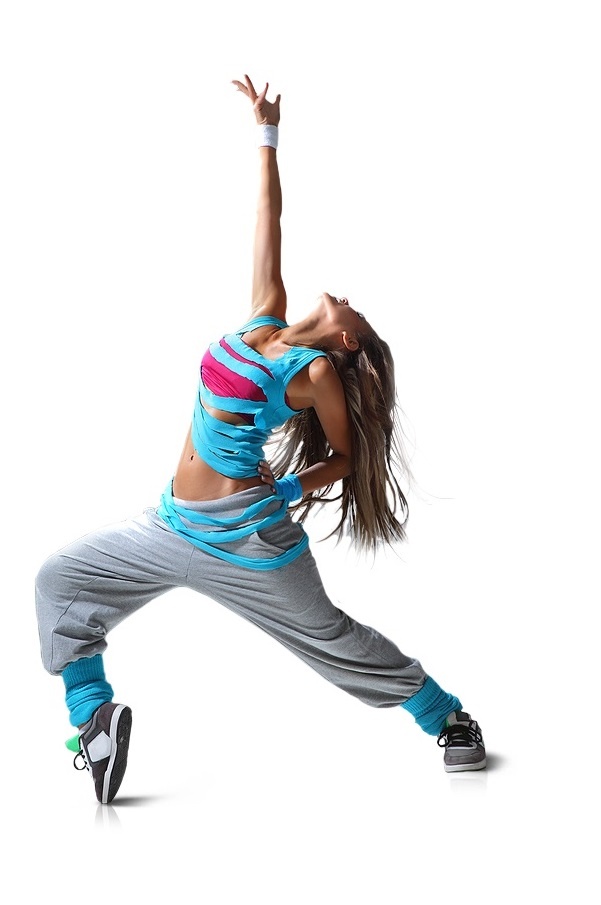 Joffrey Ballet School has trained thousands of dancers across all genres of dance – including hip hop – to become versatile professionals in the dance world. But we also recognize that this is a bit of a loaded question. Because when it comes to hip hop, even more than any other genre of dance, there’s no one way to become a professional.
Joffrey Ballet School has trained thousands of dancers across all genres of dance – including hip hop – to become versatile professionals in the dance world. But we also recognize that this is a bit of a loaded question. Because when it comes to hip hop, even more than any other genre of dance, there’s no one way to become a professional.
Joffrey Summer of Hip Hop from Joffrey Ballet School on Vimeo.
Truth is, top hip hop dancers can come from the street or the studio. But although professional hip hop dancers have diverse backgrounds, hip hop is similar to other professional dance careers in this way: it’s a highly competitive field with no guarantees. That means it can be a challenge to set yourself apart. But there are things you can do that will increase your chances of success.
Tips for Dancing Professional Hip HopHip hop is unique because of its origins and continuing status as a street dance. Hip hop isn’t like other genres of dance such as classical ballet where there is a typical career trajectory that leads to getting work in the field, or a specific background that professional hip hop dancers must have. There’s no “pointe shoes moment” – the moment when you know you’re on track to becoming a professional.
Hip hop isn’t like other genres of dance such as classical ballet where there is a typical career trajectory that leads to getting work in the field, or a specific background that professional hip hop dancers must have. There’s no “pointe shoes moment” – the moment when you know you’re on track to becoming a professional.
But professional hip hop dancers do have a few things in common. Hip hop dancers who want to work regularly need to be well versed not just in hip hop but other dance styles whether its pop, house, funk, hip hop, dance hall, or any other genre. And they should have enough formal dance training to reliably follow eight count direction. Those are just for starters.
Here are a few other tips for becoming a professional hip hop dancer.
Respect and understand the art form – Hip hop isn’t just a dance form. Hip hop is a culture, an art form that blends music, dance, street fashion, and much more. Technically, hip hop incorporates four unique art forms: DJing, MCing, breakdancing and tagging, or graffiti. It’s important to note that dance is just part of the overall culture and if you don’t understand the culture, it’s hard to “feel” the art form as a dancer. So if you want to be a professional hip hop dancer, we recommend that you spend some time studying hip hop: learn about its history and listen to the old school music from its origins through today. Watch what other dancers are doing and have done in the past, and learn from them. Developing your understanding and appreciation of hip hop culture makes you a stronger dancer and a better ambassador for the art form.
It’s important to note that dance is just part of the overall culture and if you don’t understand the culture, it’s hard to “feel” the art form as a dancer. So if you want to be a professional hip hop dancer, we recommend that you spend some time studying hip hop: learn about its history and listen to the old school music from its origins through today. Watch what other dancers are doing and have done in the past, and learn from them. Developing your understanding and appreciation of hip hop culture makes you a stronger dancer and a better ambassador for the art form.
Spend some time in the studio – Although professional hip hop dancers can still come from the streets the “old school” way, those stories are becoming ever rarer. For better or worse, “New style” hip hop dancers – who learned their craft in a studio, are becoming the norm. That is because a professional dancer must be able to take direction and follow complex choreography. The ability to freestyle is key, but to perform as part of a crew or as a background dancer means that a background in the formal language of dance is important.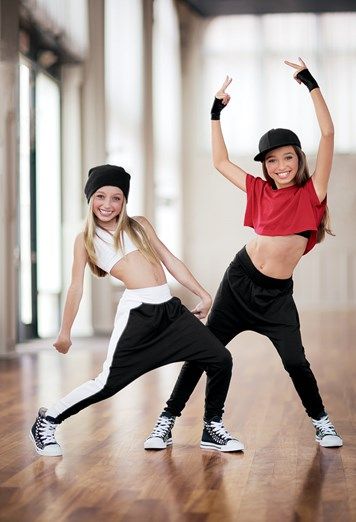 In addition, formal dance training teaches you to develop strength and flexibility which will reduce your chances of injury and increase your longevity as a dancer. These are good things.
In addition, formal dance training teaches you to develop strength and flexibility which will reduce your chances of injury and increase your longevity as a dancer. These are good things.
Be insanely talented and athletic – Let’s face it, hip hop dancing is extremely high energy performance. You need to be incredibly athletic and strong to pull off the moves it takes to perform a street freestyle or a new style choreographed performance. Hip hop music is high energy and you must be too. Also keep in mind that because hip hop is a culture, not just a form of music or dance, many professional hip hop dancers become ambassadors for the art form and may also find work as dancers, models or actors. So take good care of your body because hip hop dancing is truly a lifestyle!
Market yourself like a professional – As in any performing arts field, applying for jobs as a hip hop dancer requires a few professional tools. These include your headshot, a resume or CV (curriculum vitae), and a dance reel.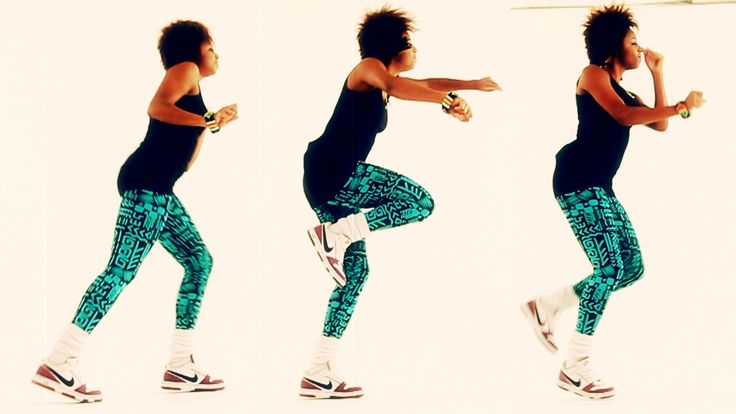 Your headshot should be recent, natural, and look like the real you, so not too much makeup. Wear a hairstyle similar to what you would wear to an audition. A dance reel is simply a video that highlights your best dance skills – popping, locking, freestyling, your work as part of a crew, highlights of a dance battle or competition. The video can be submitted on a flash drive, SD card or shared on social media. Finally, gaining representation by an agent can be incredibly helpful when it comes to finding paying work as a hip hop dancer…but it is neither a guarantee nor a requirement.
Your headshot should be recent, natural, and look like the real you, so not too much makeup. Wear a hairstyle similar to what you would wear to an audition. A dance reel is simply a video that highlights your best dance skills – popping, locking, freestyling, your work as part of a crew, highlights of a dance battle or competition. The video can be submitted on a flash drive, SD card or shared on social media. Finally, gaining representation by an agent can be incredibly helpful when it comes to finding paying work as a hip hop dancer…but it is neither a guarantee nor a requirement.
Network like crazy – Lastly – and we can’t stress this enough – when it comes to professional hip hop dancing (or any form of professional dance) it isn’t just what you know, it’s who you know. To find work professionally, you need to develop an extensive network of people who know you and your work, so that when it’s time to hire, your name is at the top of the list. Formal training – whether it’s through a local studio, a summer intensive or a pre-professional dance training program – is a great way to start building your network.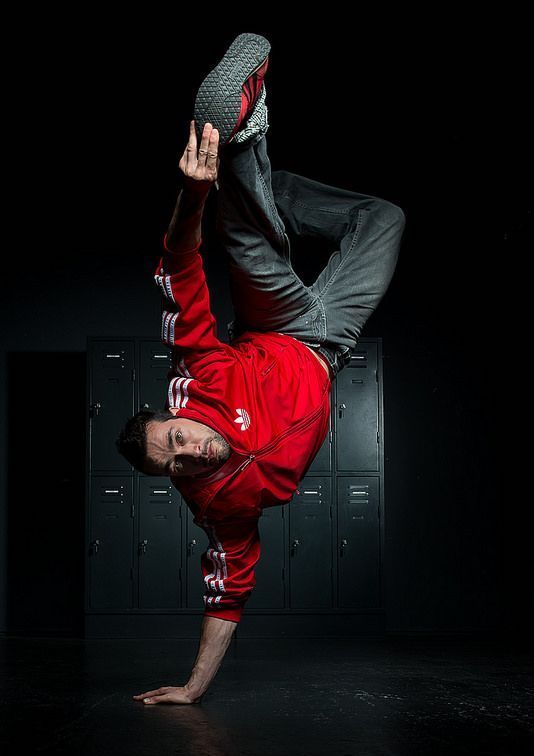 Competitions and dance crews are also a great way to gain recognition in the hip hop dance world.
Competitions and dance crews are also a great way to gain recognition in the hip hop dance world.
Although “old school” hip hop originated as a street dance, no longer is it limited to that – especially for those who aspire to dance professionally.
Since the development of “new style” hip hop in the late 1980s, most who aspire to dance hip hop professionally also spend a significant amount of time training in the studio, and for good reason. Formal education expands your ability to work professionally, so investing in your formal dance education is a smart choice. It allows you to dance more than just hip hop, it teaches you the choreography skills that will allow you to extend your professional longevity, and provides the skills to become an instructor capable of teaching the next generation when your performing career comes to an end.
If you’re ready to take the next step towards dancing professional hip hop, register today for Joffrey Ballet School’s NYC Hip Hop Summer Dance intensive.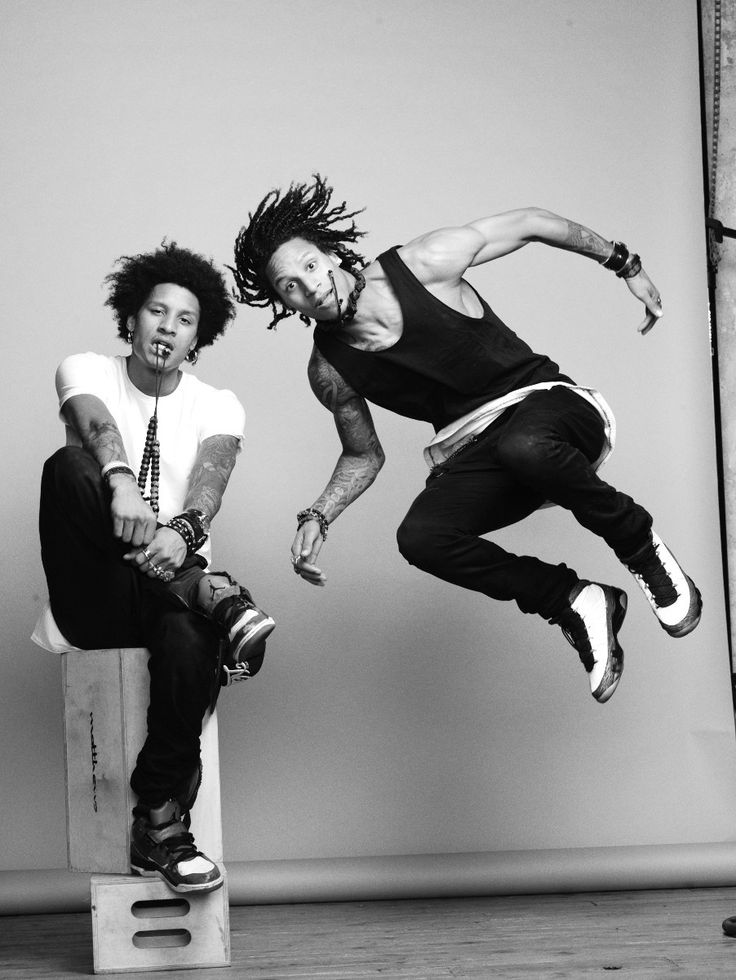 The intensive includes a jam packed week of more than 75 class types, including Breaking, Freestyle, House, Jazz/Funk, Street, Locking, Pop’n, commercial dance and other forms. You’ll have the opportunity to perform in a recorded summer dance showcase and add footage to your dance reel.
The intensive includes a jam packed week of more than 75 class types, including Breaking, Freestyle, House, Jazz/Funk, Street, Locking, Pop’n, commercial dance and other forms. You’ll have the opportunity to perform in a recorded summer dance showcase and add footage to your dance reel.
Best of all, you can network with the best in hip hop. Our instructors include hip hop stars like TRIX, season 9 finalist of So You Think You Can Dance; Andrew “Dr.Ew” Carter, who has danced with performers like Ariana Grande, J Lo, Janet Jackson, Kendrick Lamar and many other top artists; and Carlos Neto, among many others. Our artistic directors are Lisette Salgado-Lucas and David Lucas, founders of the Stomp the Ground (STG): The Ultimate Dance Competition.
Audition With Joffrey!If you’re looking to take the next step towards dancing hip hop professionally, contact Joffrey Ballet School today to register for an audition for our next hip hop summer dance intensive or our year round Jazz and Contemporary training program. Whether you spend a summer or a year with us, your dreams of dancing professional hip hop start here!
Whether you spend a summer or a year with us, your dreams of dancing professional hip hop start here!
Digital Auditions: https://summer.joffreyballetschool.com/digital-audition/
JBS Admin (69 Posts)
Founded in 1953 by Robert Joffrey and Gerald Arpino, Joffrey Ballet School maintains the vision of its founders to transform passionate dance students into versatile, individualistic artists able to collaborate and evolve fluidly in a fast-changing society. With an accredited dance program that offers two core areas of study – ballet and jazz/contemporary – JBS is known for its diverse curriculum and has the largest summer intensive training program in the country.
How to be a good hip hop dancer - Street Cultures
Love what you do. If you want to dance, love the dance. Maybe you want to dance so that the girls pay attention to you!? Or guys if you're a girl. In order to look good, you have to stop paying attention to how people see you from the outside, and focus solely on yourself. Put your whole soul into it. If you don’t have a heart for dancing, you will definitely give up after the first movement that doesn’t work out, because it will become stressful for you. But if you really have the desire, you will work hard on one movement until you master it.
Put your whole soul into it. If you don’t have a heart for dancing, you will definitely give up after the first movement that doesn’t work out, because it will become stressful for you. But if you really have the desire, you will work hard on one movement until you master it.
Find information about famous dancers. There are many legendary dancers who inspire many dance lovers. It will be helpful to look at the history of how they learned to dance. This, of course, does not mean that you should try to repeat the movements of a professional. It's too difficult. But remember this: choose one favorite dancer, and when you dance, think about him/her and imagine that you are he/she. Let him/her become your invisible teacher!
Learn the movements. You can sign up for dance lessons or learn the movements yourself. A lot of people watch videos and try to replicate what they saw, but mostly it's hard to do. It is necessary that someone supervise the movements you have mastered and correct them if difficulties arise.
Learn the history of dance. Dancing is one way to express your feelings. He is handsome, full of artistry and sometimes just indescribable. There are many styles of dance, such as breakdancing, popping, tatting, locking and others. These styles fall under the hip hop category.
Dance with your friends. Practicing dancing alone can be boring. You can also borrow a couple of moves from other people. Find a nearby dance studio, gym, or just practice outside! Gather your friends, turn on the music and improvise! Even if you look weird from the outside, after hard work there is always something comforting, right? Ignore the passers-by, just practice with your friends. Who knows? Perhaps in the future you and your friends will become the best dance group in the world.
Don't give up! Perhaps your friends will say that dancing is not for you. Pay no attention to them. If it seems to you that you are not succeeding, stand in front of a mirror and look at yourself. Why not? Why do you think you can't dance? Never give up. Tell yourself: you will do it! You are either too shy or too lazy! Of course you can! Now I will learn these movements and show them who I really am. Correctly!
Why not? Why do you think you can't dance? Never give up. Tell yourself: you will do it! You are either too shy or too lazy! Of course you can! Now I will learn these movements and show them who I really am. Correctly!
To the details... If you want to practice breakdancing, also known as "b-boy", you first need to know what kind of style it is. They will require a lot of strength and creativity to engage. You must feel it. You may feel like the moves you want to learn are too hard and you're ready to give up, but trust yourself. There are many different moves in break dancing and you can learn any of them and then transform them into your own style.
About the peculiarities of styles… If you want to do popping, which is considered the most popular b-boy style, you need natural inclinations, because with age your body becomes less flexible. Thus, you will have to start training from a young age, or if you have the inclinations of nature. If you don't have the makings and you didn't hear about popping as a kid, then you'll have to put in a lot of effort, because popping is literally "shuddering to the music. " It can both attract attention and scare away.
" It can both attract attention and scare away.
Keep training. Practice every day. This does not necessarily mean a hard workout. Let's say you're practicing handstand while you're waiting for your lunch, you can practice a little. There is a minute of free time - train. Anywhere in your home. When you go somewhere, make a couple of movements, keep repeating them, because the more you practice the movements, the more naturally they come out.
Speak up. Audition! Good work on the dance. Forget everything you've learned before. You can perform on your own or with friends. Do all the learned movements to the music and the dance is ready! Listen to the reaction of the public, their advice and do better next time! Dancing on stage will inspire you even more. Be proud of your work, but don't stop, keep improving until you reach your goal!
training in basic movements and dance features
Contents
Hip-hop, like any other dance direction, is best learned in a professional school. After all, only a qualified teacher will find an individual approach to a new student and teach the necessary movements. But if this is not possible, or if you want to come to class prepared, you can try to master the direction of hip-hop at home. How to dance the first movements, now we will tell.
After all, only a qualified teacher will find an individual approach to a new student and teach the necessary movements. But if this is not possible, or if you want to come to class prepared, you can try to master the direction of hip-hop at home. How to dance the first movements, now we will tell.
Like any dance, hip-hop training includes getting acquainted not only with the basic movements of the style, but also with a certain philosophy. And in this direction it is special. Hip-hop came to us in the second half of the last century from the most disadvantaged areas of New York and Los Angeles. Tired of injustice, aggression and blood, teenagers, who mostly did not have the cleanest reputation, invented their own special way to resolve conflicts - with the help of dance battles and rap parties. Hip-hop is a free dance, a challenge to society and a protest against any inequality. That is why the main thing in this style is not at all the clarity of the learned movements, but the sense of rhythm, improvisation and expression of the individuality of the performer.
Getting Started: Preparation and Basic Movements
Before learning hip-hop for beginners, you should make sure that you feel comfortable practicing. According to experienced dancers, three things will help you relax and start learning:
- Appropriate environment: flat floor, spacious room, full-length mirror.
- Loose clothing and comfortable shoes. Nothing should hinder movement.
- Hip-hop rhythmic music.
A little ritual will help you tune yourself into the wave of hip-hop: stand with your legs apart, put your hands down and close your eyes. Listen carefully to the sound of the music and try to learn to hear the beat. Rock to the beat. And now you have already mastered the first movement. Congratulations! It's time to move on to more complex elements.
The basic movements of hip-hop are swing and step. You are already familiar with the first one. Now try to put your right foot to the side and stretch your right hand up.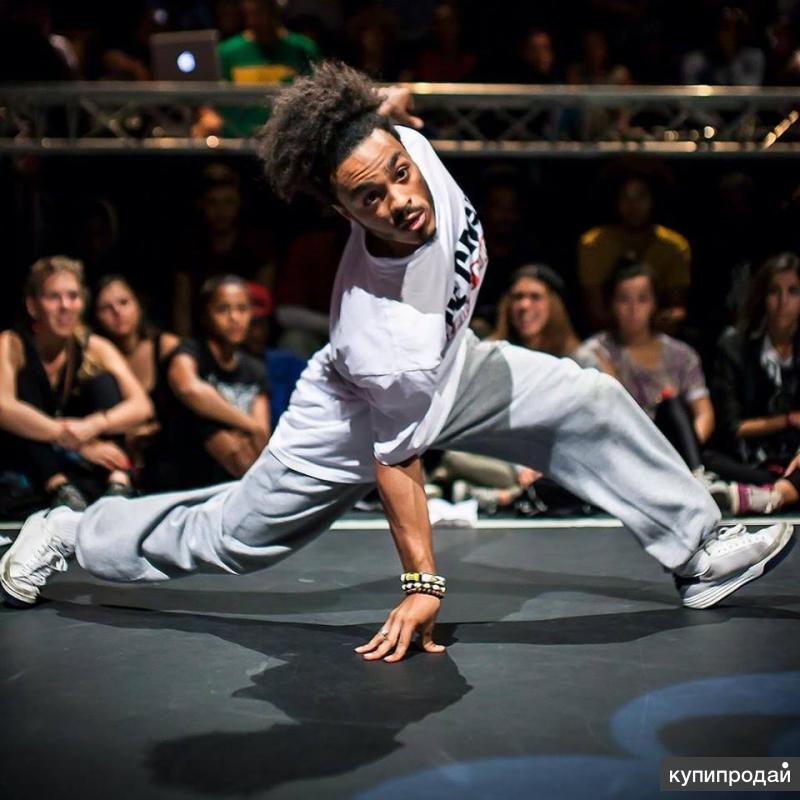 Bend your right leg, transferring your body weight to it, and lower your arm to shoulder level. Turn the body to the left, bend the left leg, and put the right leg on the toe. Now lower your right knee, arch your back and reach your hands to the floor. When you manage to complete this combination, consider yourself a good start in hip-hop.
Bend your right leg, transferring your body weight to it, and lower your arm to shoulder level. Turn the body to the left, bend the left leg, and put the right leg on the toe. Now lower your right knee, arch your back and reach your hands to the floor. When you manage to complete this combination, consider yourself a good start in hip-hop.
Sign up for a trial lesson
Here are some more basic hip-hop moves for beginners:
- Starting position - standing, feet shoulder-width apart, and arms along the body. We squeeze the brushes into a fist and alternately bring forward one hand, then the other. Then we connect the legs bent at the knee: left hand - right leg, right leg - left hand.
- Starting position - standing. We jump in place and cross our legs, and bend our arms as if we were rowing.
- Starting position - standing, feet slightly wider than shoulders. We put the right leg a little back, bend the legs at the knees, which at the same time look straight.
 With the right hand we cover the face, with the left, folded into a fist, we put it in the region of the heart. Then at the same time we tilt our head to the right and unclench the left hand, and after that we turn the right knee and right hand to the right.
With the right hand we cover the face, with the left, folded into a fist, we put it in the region of the heart. Then at the same time we tilt our head to the right and unclench the left hand, and after that we turn the right knee and right hand to the right. - Starting position - standing, feet firmly pressed to the floor, knees slightly bent. We put the spread fingers of the right hand on the chest, keep the elbow parallel to the floor. We bend in an arc, as if we received a blow right in the heart. Then we make two turns in different directions, straighten our back and return to the starting position. The hand at this time falls from the heart to the waist. At the end, we throw the pelvis forward again, round the back and tighten the buttocks.
You can achieve the first results quite quickly. But when you start to study closely how to dance hip hop, you will soon notice that there are no clear movements and rules in this direction. Having mastered a few basic elements, the dancers begin to improvise, create their own combinations and dance as creative fantasy suggests.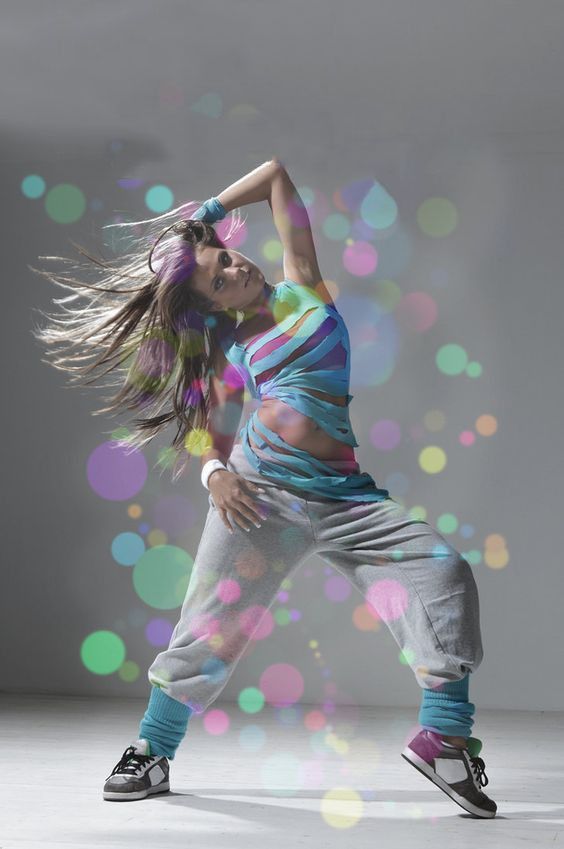
How to continue: choosing a style
If you have mastered the first movements of hip-hop from videos and photos on the Internet, it's time to choose the direction in which you will develop further. Hip-hop culture is a wide range of dance styles that differ from each other both in elements and in general mood. The main ones are:
- Breakdance is still popular basic style of hip-hop, on which the direction originated.
- Popping - rhythmic contraction of various muscle groups to the music so that it looks like jolts on the performer's body;
- Wave - smooth and plastic movements of the body, the most famous of which is the wave with hands;
- Afro-jazz - shaking mainly the lower and most prominent part of the body in women;
- Crump - vigorous shaking of various limbs to the music so that it seems as if someone has moved into the dancer;
- New Style, also known as freestyle, is an improvisational dance that combines not only hip-hop movements, but also elements borrowed from more than a dozen other dance styles.
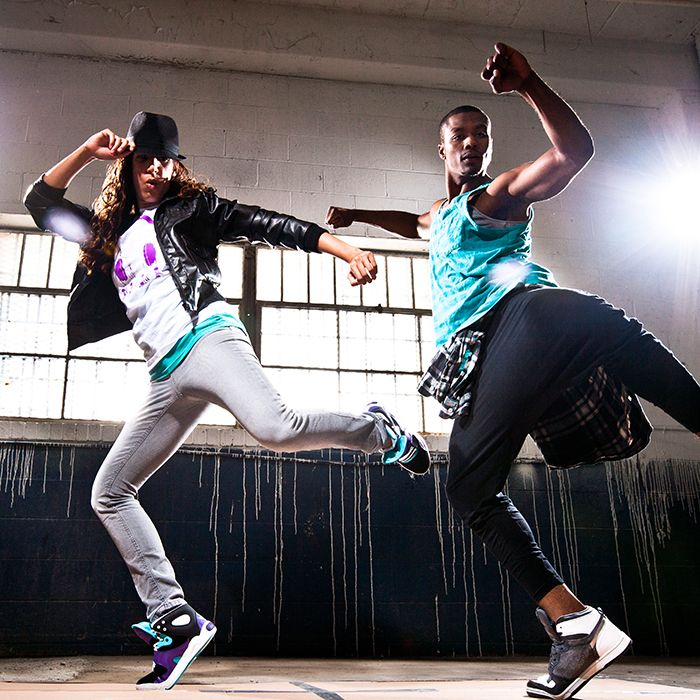
- La Style - hip-hop, where the emphasis is on entertainment, so this style is used mainly in videos and when staging shows.
- Ragga Jazz is a dance tuned to the music: the performer's legs work under the drums, and during the recitative, the hands become active.
- Locking - an energetic dance with "locks" - freezing in different positions for a few seconds or periodically slowing down the movement.
- Power move is a spectacular style that includes complex acrobatic elements, handstands, various twists, and transitions.
- C-walk is a “language” dance with a criminal past that emphasizes intense and very dynamic footwork.
Women's and men's hip-hop
The next step in how to learn hip-hop without leaving home is to bring a little femininity or, conversely, brutality into your existing skills - depending on your gender accessories. The thing is that female and male hip-hop are somewhat different from each other, and, therefore, representatives of the beautiful and strong half are trained in this direction in different ways.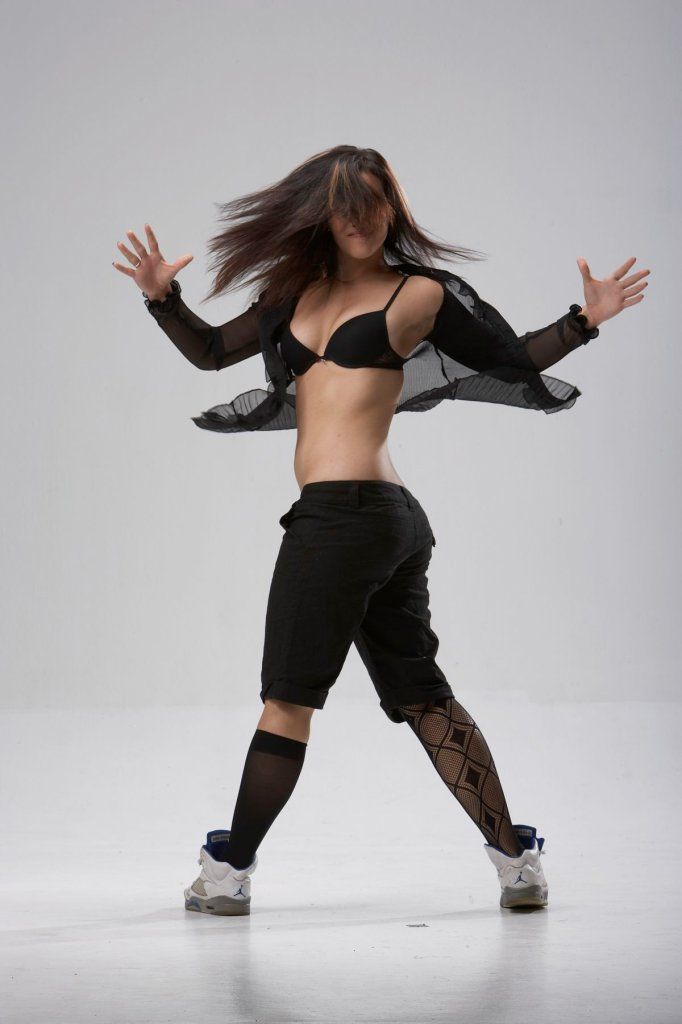
Hip-hop dancing for beginner girls is based on plasticity, flexibility and unobtrusive sexuality. Girls wear baggy sweatpants and hoodies on a par with men, perform sweeping movements, but their execution looks different: hips, legs and shoulders are more involved, the elements are a little smoother and sexier.
Male hip-hop, on the contrary, is more daring, energetic and sometimes even aggressive. The focus is on the work of the arms and body, acrobatic elements and movements that require strength and male endurance.
If you prefer to learn this difficult direction from videos, it is better to initially choose hip hop training, where the movements will be performed by a dancer of your gender. Together with the right technique, you will be able to capture the gender characteristics of the choreographic elements.
A few more secrets
Learning to dance hip-hop at home, without classes with a professional teacher, is not easy, but real.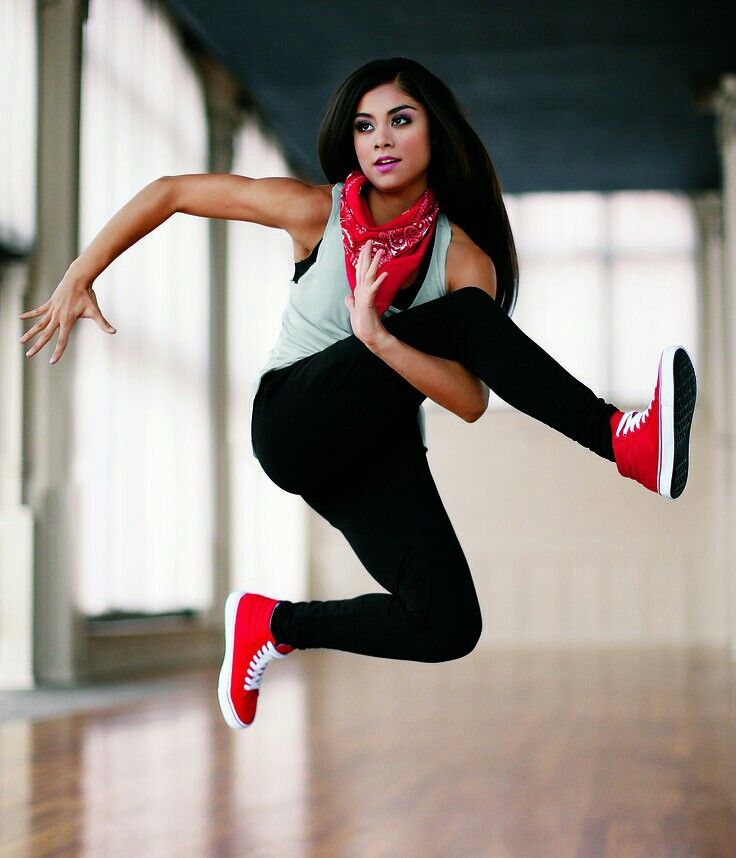 Especially if you add training with a few more components. Here, as in learning a foreign language, only complete immersion in the culture will help. So, here are some tips from “experienced” hiphopers who have mastered a lot not under the guidance of a qualified mentor, but at home by the mirror:
Especially if you add training with a few more components. Here, as in learning a foreign language, only complete immersion in the culture will help. So, here are some tips from “experienced” hiphopers who have mastered a lot not under the guidance of a qualified mentor, but at home by the mirror:
- Videos with basic exercises will help you master some movements, but for additional skills, it is better to turn to online courses. Hip-hop lessons for beginners are regularly held online, often live.
- Hiphop parties and hangouts will help you melt into this culture and make new acquaintances. Yes, of course, everyone will laugh at your first dances, but no one drags you to the center of the circle. While you're learning, watch the pros dance, adopt a style, and memorize some moves to practice at home.
- Clear training regimen. Only with regular practice can you achieve results. In addition, our body is set to a certain schedule, and if you exercise at a certain time, it will prepare for stress.
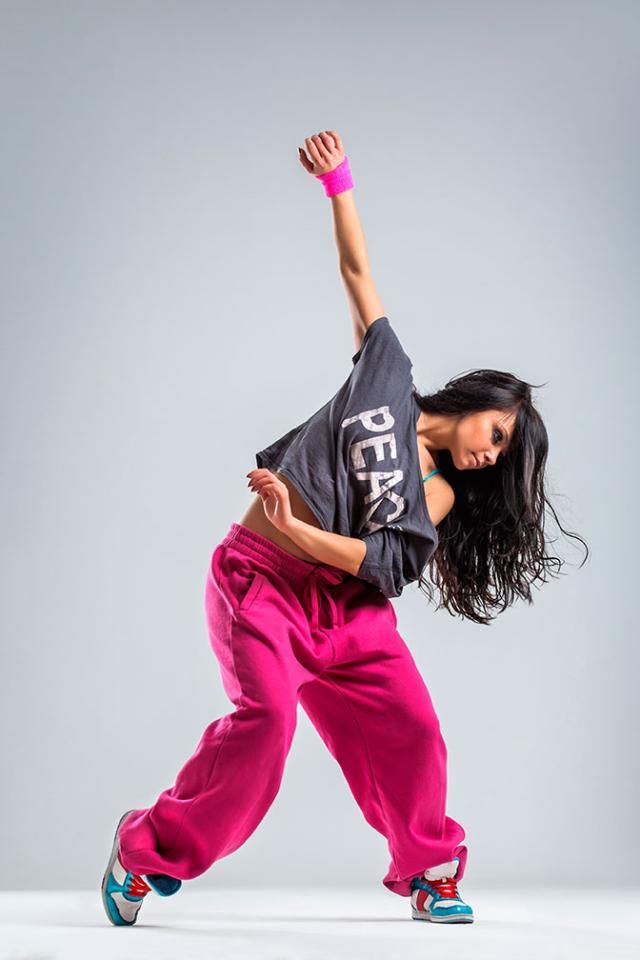 As experienced dancers note, the optimal duration of even home workouts is two hours. This is enough for warming up, and for the lesson itself, and for stretching after.
As experienced dancers note, the optimal duration of even home workouts is two hours. This is enough for warming up, and for the lesson itself, and for stretching after. - Additional physical activities. If you are in the mood not just for basic hip-hop movements, but for serious hip-hop elements with tricks, strengthening the muscles of the whole body is indispensable. You will need strong arms, strong core muscles, and no extra weight. This can be achieved by exercising in the gym or additional weight training at home.
- Compliance with safety regulations. Be sure to dance in comfortable non-slip shoes and loose clothing. Do not start training without a proper warm-up, and when practicing acrobatic elements, lay something soft on the floor.
Video tutorials will be enough to learn how to dance hip-hop. But to become a real dancer, you need to study the subculture from the inside. It is believed that a hiphoper has achieved true mastery when he is in perfect control of his body, does not "slow down" on the dance floor, knows how to improvise and select universal movements for any music.


